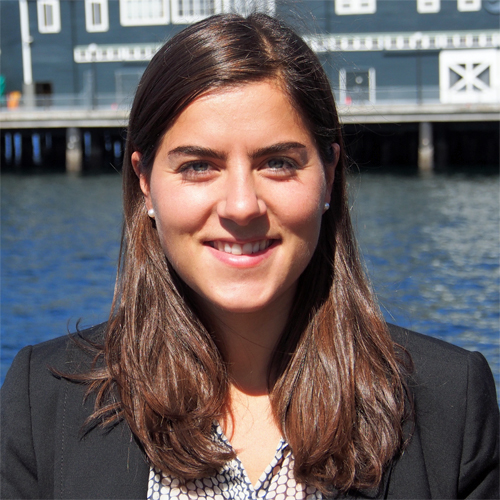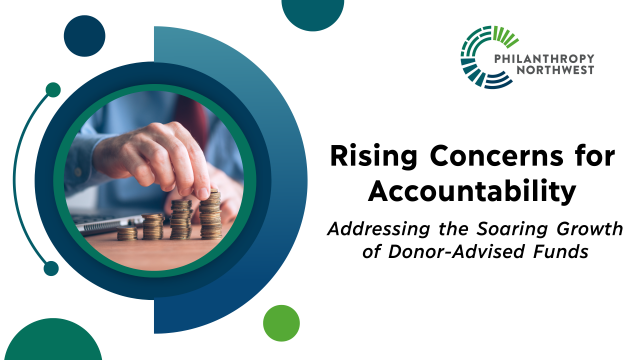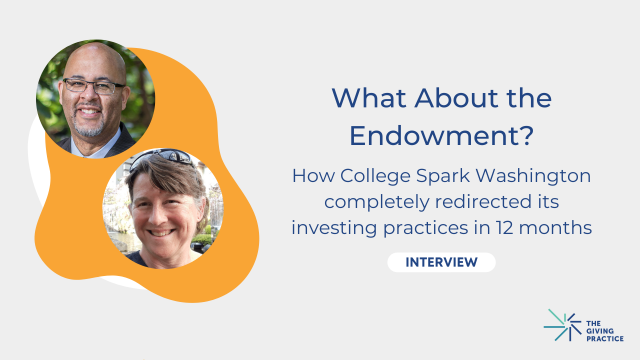Lauren Sato, Canopy
Six months ago, Canopy launched in the Pacific Northwest with a grand vision to build the infrastructure necessary to create a thriving ecosystem for place-based impact investing. Half a year later, our commitment to this vision has led to many exciting changes. Based on interest and feedback from the field, Canopy has evolved from its early work of conducting field-building research to include robust technical infrastructure building and educational programming, all aimed at creating equitable prosperity in our region — from northern California to Alaska, from the Pacific Ocean to Wyoming — and ultimately across the United States.
I recently sat down with one of these exciting changes — our newest employee, Sarah Mahlab, Canopy's associate director of innovation and investments — to get her perspective on where Canopy is now and where we’re headed.
Lauren: Sarah, you interned with Canopy last summer when this whole concept was still in the formative stages of development. As you’re jumping back in, what has changed most since your internship, and what hasn’t changed?
 Sarah: The core of Canopy’s mission hasn’t changed much since last summer, but the way we’re talking about the work and thinking about the scale of the opportunity has certainly evolved. Most notably, we’ve boiled our offerings into three distinct, but interconnected categories — Canopy PLACES, Canopy CAPITAL and Canopy CATALYST — which has helped us better articulate our goals and develop a longer term strategy. While all three service offerings were generally part of the original business plan, the biggest change I’ve seen is a deeper development of Canopy’s capacity building activities through Canopy CATALYST, designed to educate both investors and early-stage fund managers on relevant elements of place-based investing. This has happened as a response to both demand from the field and a recognition that we must meet investors where they are in the process of developing a regional investing program that will enable capital to flow to local economies. With the addition of learning communities and other training programs, Canopy CATALYST has taken shape while I’ve been away. These learning communities are designed to convene around certain topics relevant to place-based investing. Our first “Catalyst Cohort” is organizing this fall around rural economic development in the Pacific Northwest. I’m really eager to see where this goes.
Sarah: The core of Canopy’s mission hasn’t changed much since last summer, but the way we’re talking about the work and thinking about the scale of the opportunity has certainly evolved. Most notably, we’ve boiled our offerings into three distinct, but interconnected categories — Canopy PLACES, Canopy CAPITAL and Canopy CATALYST — which has helped us better articulate our goals and develop a longer term strategy. While all three service offerings were generally part of the original business plan, the biggest change I’ve seen is a deeper development of Canopy’s capacity building activities through Canopy CATALYST, designed to educate both investors and early-stage fund managers on relevant elements of place-based investing. This has happened as a response to both demand from the field and a recognition that we must meet investors where they are in the process of developing a regional investing program that will enable capital to flow to local economies. With the addition of learning communities and other training programs, Canopy CATALYST has taken shape while I’ve been away. These learning communities are designed to convene around certain topics relevant to place-based investing. Our first “Catalyst Cohort” is organizing this fall around rural economic development in the Pacific Northwest. I’m really eager to see where this goes.
What has Canopy accomplished in 2015 that you’re most excited about?
It has been a pretty big year for us all around. Personally, I’ve been particularly excited to see the regional investment pipeline develop. There are a lot of interesting investment fund managers working in the region that are great candidates to feed Canopy’s investment pipeline. Even more apparent is the large appetite from entrepreneurs and community-based organizations to access regional investment capital to fund projects and enterprises directly. We’ve recently started to track and organize these investment opportunities in an online data-room. While we’re still in the middle of researching and training our first Pacific Northwest fund, called Gilded Rogue, we have another two queued up for 2015 that have interesting strategies and regional impact. I’m looking forward to seeing how our members put their capital to work with these fund managers following the completion of our investment research.
As associate director of innovation and investments, what do you think the future holds for Canopy in the next five years?
There is a role for technology to play in making Canopy the go-to source for place-based impact investors — for education, networking and investing. I see Canopy developing a robust online ecosystem that includes a searchable map of the regional investment ecosystem, an information hub where regional stakeholders can connect and collaborate on regional economic development initiatives and a robust investment pipeline of regional investment opportunities. We’re starting to build components of this today, with expectations that we’ll develop additional technology solutions going forward to help us scale. Canopy has the potential to be a mix between a marketplace, data aggregator and consultant for place-based investment activities. This positioning makes Canopy both unique and adaptable to the demands of the ever-growing and changing field of place-based investing.
In addition, while Canopy is deeply rooted in the Pacific Northwest, where we’re piloting our program, one of our goals is to develop a replicable model that can be applied to all regions of the United States. We’re already having conversations with impact investors in other regions and continue to think ahead about the place where we might next try to “do” Canopy. There is a great appetite in the field to see Canopy work outside the Pacific Northwest in the next five years.
Finally, what do you think are the keys to Canopy’s success?
As a start-up with a small team, we’ve got a lot of balls in the air and it’s important for us to be able to successfully build and deliver on the ideas we have developed. To do so, it’s critical for us to form partnerships and collaborate with organizations like Philanthropy Northwest that have both deep domain expertise and the capacity to work with us. Engaging strategic partners and a diverse set of service providers not only deepens our perspective and our reach, but also helps us better understand the regional investment ecosystem and the various stakeholder groups that have an interest in what we are doing. Identifying and engaging the right partners is a challenge, but imperative to our work.
Internally, I think it’s essential that even with our busy schedules, we always make time to think creatively and try to innovate on our business model. We need to use the next six months to a year to test the ideas we already have, iterate on them and also think totally outside the box. We have some momentum now, and it’s important that we use this to our advantage as we start to think about going deeper in certain areas and scaling.
Lauren Sato is chief operating officer of Canopy, a Pacific Northwest collaboration of stakeholders, including leaders from Laird Norton Family Foundation, Meyer Memorial Trust and The Russell Family Foundation, identifying opportunities to build a regional investment ecosystem that benefits communities and creates financial returns. She can be reached at lauren@investcanopy.com.


